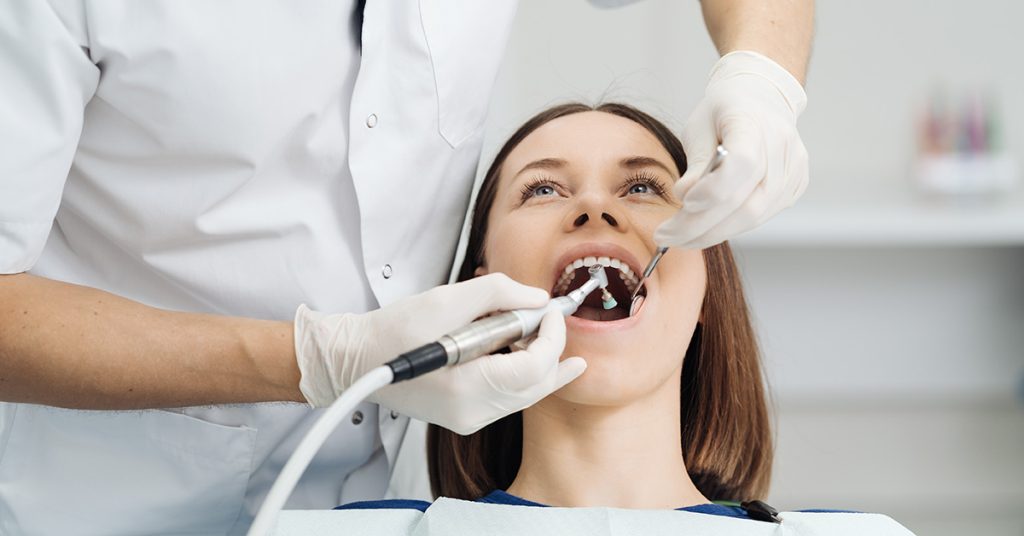Scaling and polishing is a professional non-surgical procedure for the removal of plaque, calculus and super-facial stains using a power-driven hand instruments by a dentist or hygienist.
What are the benefits of teeth scaling and polishing?
Scaling and polishing are very important to remove plaque (soft and sticky bacteria), calculus (hard deposits formed by mineralization of dental plaque) and stains (brown and yellow spot. Also, they help leave the surfaces of the teeth clean and smooth so that bacteria are unable to stick to them and cause plaque and calculus, leading to gum diseases and cavities.
What are the steps in scaling and polishing?
1. Scaling
The dentist uses a combination of manual hand instruments like curettes or scalers and motorized instrument like ultrasonic scalers to remove all calculus and debris supra-gingival (above gum line) and sub-gingival (below gum line).
The scaling of teeth can sometimes cause sensitivity especially in sub-gingival scaling so that the dentist can give a local anesthetic injection to numb each area of the mouth to decrease discomfort and sensitivity.
2. Polishing
Polishing is done after scaling to remove all external stains and smooth out teeth surfaces. It is done by applying abrasive paste (containing fluoride) with a rubber cup or micro-brush in a rotating motion, making the teeth surfaces shiny and glossy.
How often teeth scaling should be done?
Ideally, scaling and polishing should be done every 6 months. However, it majorly depends on your periodontal health status. If you have a poor periodontal condition like frequent bleeding gums, bad breath, swollen gums, pus discharge, and mobile teeth, the patient should consult a periodontic for advanced treatment.
For effective oral care products, we recommend the Elgydium products



